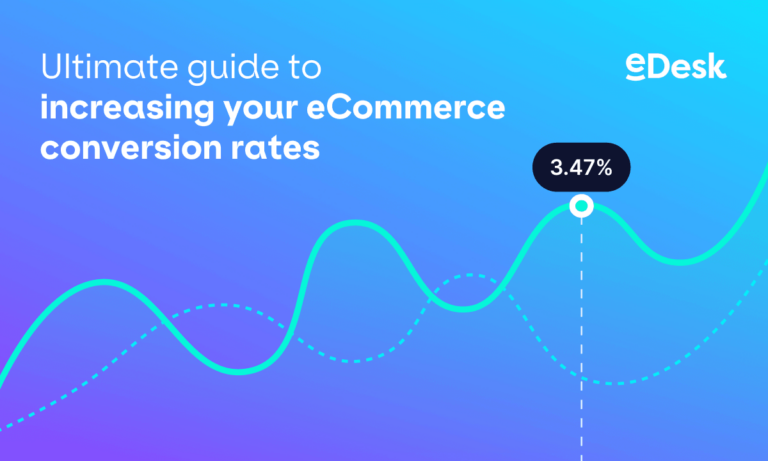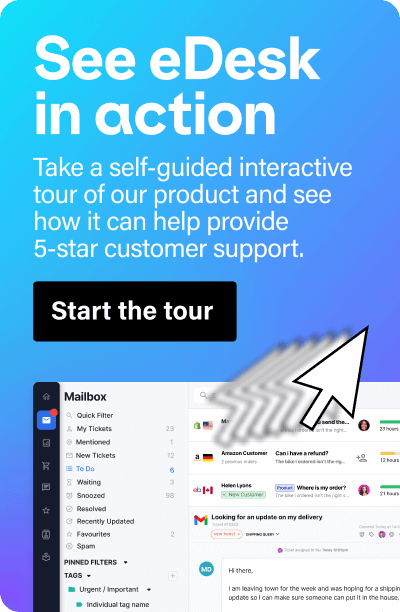Noticing a lot of visitors to your website, but struggling to boost your conversation rate past 2%? Low conversion rates aren’t always a sign that something is terribly wrong with your business, but they do suggest that you could be doing – and earning – more.
In this guide, we discuss the best tried-and-tested methods of increasing your eCommerce conversion rate, including offering free shipping, competitively pricing your products, and interacting with customers with eDesk live chat.
TL;DR
- eCommerce conversion rate is a percentage measurement of how many visitors to your eCommerce store made a purchase.
- You can calculate your store’s conversion rate by dividing total conversions (sales) by the total number of visitors.
- Boosting your eCommerce conversion rate is essential if you want to increase your return on investment (ROI) and earn more money without making additional investments in marketing.
- Using live chat prompts, simplifying the checkout process, responding quickly to customer tickets, and providing a clear returns policy are all effective ways to optimize eCommerce conversion rates.
What is eCommerce conversion rate?
eCommerce conversion rate is a measure of how many customer transactions your website receives compared to the number of visitors. Conversion rate most commonly refers to sales, but other conversions for eCommerce websites are:
- Added items to cart or wishlist
- Social media shares
- Email signups
- Any other valuable KPIs
eCommerce conversion rate is calculated by dividing the number of conversions by the number of visitors. So, if your website has 1,000 visitors and 500 conversions in January, your conversion rate for this month is 500 divided by 1,000, or 50%.
The average conversion rate for an eCommerce site is 2.5% to 3%, so a conversion rate higher than this percentage is considered good. You can track conversions with Google Analytics or tools like Hotjar.
Importance of improving your eCommerce conversion rate
Why focus on eCommerce conversion rate optimization? The obvious benefit is that boosting your conversion rate means you’re making more sales from the same number of website visitors.
You don’t necessarily have to spend more money on marketing to attract more customers to boost your conversion rate. (In fact, if you’re not implementing methods to increase your eCommerce conversion rates, bringing new customers to your online store might not do much at all.)
In short, by implementing methods to improve your eCommerce conversions, you can enjoy the following benefits:
- You’ll increase your sales
- You’ll learn more about your target audience by observing how customers engage with your website
- You’ll lower your customer acquisition cost
- You’ll boost your SEO (a benefit of optimizing your pages to increase conversion rates)
eCommerce conversion optimization: best methods to increase conversion rates
Use these 22 methods to effectively increase conversion rates in your eCommerce store.
Utilize high-quality images and videos for products

Good product photography is thought to increase conversion rates by about 30%, and nine out of 10 customers say that image quality is the most important factor when they’re deciding whether or not to make a purchase. What does this mean? Your product images have the power to make or break a customer’s decision to convert.
Have you ever bought a product online if the image is grainy and doesn’t show you exactly what you’re buying? Probably not. You want to avoid taking a risk, so you’ll look elsewhere for a website with clear imagery.
Some customers may link image quality to the brand’s quality itself. Just as a clunky website can be off-putting, poor image quality suggests that the brand’s internal processes might also be sub-par. So, improving the quality of your website’s images – and offering more images – should help your users better visualize a product, get a better impression of your brand, and increase your conversion rates.
Think about how you can outshine your competitors with unique and clever visual marketing for your products. Videos are a great addition to images, showing how a product looks and functions as a moving object. Products with 360-degree images have also been shown to increase conversion rates by 30%. In short: think outside the box.
Communicate with your customers in real-time
If you surveyed your website visitors to find out why they left your online store without making a purchase, you’d learn something interesting: numerous customers have questions about a product that they ultimately need to be answered before they can make a purchase.
Sure, you can answer these questions in a dedicated FAQs section or the product description itself, but you cannot possibly cover every specific personal question that your customers may have. Plus, some customers are simply lazy and don’t want to look for information.
That’s where live chat comes in.
Live chat support software shows your customers that you care about their experience on your eCommerce site. By responding to customers in real-time, you eliminate long wait times for email responses and encourage customers to make a purchase while they’re in the right frame of mind.
You can also use chat prompts to encourage visitors to click “buy” by displaying cart reminder messages and hitting visitors with a friendly discount off their order – just for being in the right place at the right time.
Ideally, use a combination of chatbots and real people on your live chat software to appeal to customers looking for quick answers to easy questions, and customers who want to discuss a product in detail before they part with their money.
Learn more about about the specifics of boosting sales with live chat in our Ultimate guide to increasing your eCommerce conversion rates with Live Chat.
Make your website easy to navigate

Trying to impress customers with the most detailed, tech-savvy website they’ve ever seen? Think again. If you want to tailor your website design towards eCommerce conversion optimization, simplicity is key.
A crowded website is one of the biggest mistakes made by eCommerce businesses. Around 42% of website visitors leave a poorly-functioning website, so it doesn’t matter what you’re selling – if your customers can’t easily navigate to your product pages, they’ll probably leave.
Seamless navigation is only part of the package. Think about how you can make it as easy as possible for customers to find products, such as by using features that let customers shop by color, product type, and so on.
Showcase your most popular products on a rotating banner and use “you might also like…” popups on product pages. The faster a visitor finds the product they’re looking for, the more likely they are to buy from you, increasing your eCommerce conversion rate.
Keen to learn how to create a super-converting product page? We’ve got you covered.
Offer free shipping
Customers love the convenience of online shopping – but nobody enjoys a hefty shipping fee. Free shipping is no longer a perk; it’s a demand. In fact, almost three-quarters of all customers (66%) expect free shipping on every purchase they make online.
How does free shipping support eCommerce conversion rate optimization? Because your customers know exactly what they’re paying upfront. If you mention free shipping on your homepage banner, visitors are instantly aware that they won’t be hit with an extra $10-$20 at checkout.
If you’re worried that paying for your customers’ shipping costs will reduce your overall earnings, there’s a simple solution: increase the price of your products to cover your shipping fees. This is especially important if you sell large items and you need to keep your shipping costs down. Just make sure your prices are still competitive or your customers may take their business elsewhere.
Don’t want to offer free shipping on all your items? Consider offering free shipping once your customers spend a benchmark figure in your store, which will encourage customers to spend that little bit more to save on shipping costs.
Use trust signals
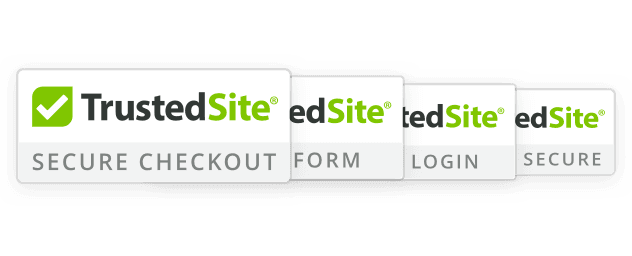
Customers are far more likely to buy from your eCommerce website if they know that they can trust you.
17% of customers who dropped out of a purchase said that “payment security concerns” was their reason for ditching the sale. So it stands to reason that proving to customers that your website is safe and trustworthy should encourage more visitors to buy from your store – thus boosting your conversion rate.
What does being trustworthy mean? Being a legitimate store, using industry-standard security measures, and protecting your customers’ credit card information are all essential markers of a reliable eCommerce website.
You can use the following trust signals to encourage online shoppers to buy from your website:
- Add images of popular credit cards and payment options (such as PayPal) to show customers that you support customer-trusted payment methods.
- Display security badges such as GeoTrust and TrustedSite, as long as you use these security programs. Only display an image if your website truly is secure.
- Install SSL – at least at checkout, but preferably site-wide.
Another major trust signal is social proof, which is largely achieved by customer reviews (discussed later in this article) and customer interactions with your brand on social media.
When you can prove to your visitors that customers respond well to your products, you show that you’re a trustworthy business – essential if your main goal is conversion optimization.
Offer flexible payment options
If you offer high-quality products at a high price, you’re probably losing customers that can’t afford – or can’t justify spending money on – your products.
One simple, risk-free method of eCommerce conversion rate optimization is to offer flexible payment options, making your products more affordable to customers with all budgets.
Shopping tools like Klarna and Afterpay allow customers to buy products at no upfront cost and split their payments into interest-free installments.
This is a win-win for both customers and eCommerce store owners. You get the full cost of the product upfront, while the customer pays the company back over a period of several weeks or months. The only catch? You have to pay a small retailer fee per transaction.
By making your products accessible to everyone, you should notice that more of your visitors are making purchases, increasing your rate of conversions.
Use attention-grabbing site features

Enhancing your customers’ first impression of your website is absolutely essential for conversion rate optimization. Your eCommerce store shouldn’t only look clean and modern – it should also feature attention-grabbing elements that give customers a reason to stick around.
Sale or discount signs, bold fonts, snappy videos, and high-quality images are all effective ways to encourage an impatient customer to stick around for long enough to become tempted by your products. The more successfully you can entice your customers into your online store, the better your eCommerce conversion rate.
If nothing relevant catches your visitors’ attention, they’ll simply head back to Google and choose another website from the options presented to them.
Check out our video how-to guide if you’re new to product videos.
Provide limited-time deals and discounts
Customers love a discount, with an estimated 93% of customers using a discount code at some point throughout the year.
Deals and discounts appeal to customers for numerous reasons: they evoke a sense of urgency, telling a customer to act fast before the deal ends; and they allow customers to feel smug in the knowledge that they’re paying a fraction of the price that a product is usually retailed at.
There are a few ways to appeal to customers with deals and discounts:
- Showcase limited-time discounts somewhere that all visitors are likely to see, such as your website’s homepage. This increases your likelihood of appealing to customers who just came to your website out of curiosity, with no real intention to buy.
- Email customers with dedicated discount codes for their loyalty. This gives your customers the satisfaction that they’re one of the few to have the chance to use your exclusive discount code, which should encourage them to spend their money. Use customer service email templates to save time.
Aim to offer at least one limited-time discount or deal per month. For the most effective conversion rate optimization, focus your deals on your most popular products.
Go the extra mile with customer service

What’s the best way to stand out amongst your tens or hundreds of competitors without pricing below your means? By offering exceptional customer service that sets you apart as a one-of-a-kind eCommerce site.
If you’ve ever experienced surprisingly friendly, efficient, or helpful customer service, you probably already know the value of treating your customers well.
Good customer service might not increase conversion rates amongst first-time buyers, but it’s a great way to encourage customer loyalty and increase the likelihood of customers returning to make future purchases. 96% of customers say customer service is an important deciding factor for being loyal to a brand – so make sure to invest suitably in this side of your business.
Good customer service goes well beyond dealing with or preventing complaints. You need to show customers that you’re there for them at every stage of the journey, from using live chat on your website to responding quickly to shipping queries, efficiently processing returns and refunds, and using AI responses for speed when applicable.
You don’t have to spend hours of your time communicating with your customers. Using a smart inbox will make it easy to manage your communications and stay organized without the need for a huge customer service team.
Offer competitive pricing
If you’re competing with other stores selling brand-name products, you need to price your products on the lower end of the spectrum to stand out from the crowd. You’ll probably need to keep an eye on your competitors and adjust your prices based on product trends, customer demand, and peak shopping seasons.
Of course, finding the balance is important – you don’t want to price your products so low that you end up in a race to the bottom, or customers question whether or not your products are legitimate.
You don’t need to be the cheapest in the market. As long as your image quality and marketing are top-notch, and visitors know that you’re a trustworthy store to buy from, your customers should buy from you. It may take some tweaking, but your pricing can greatly influence your conversion rates.
If you think your eCommerce marketing tactics are lacking, this guide is well worth reading.
Allow customers to checkout as guests
Guest checkout is easy to set up on your eCommerce site and makes shopping online more appealing to most customers. It’s a great conversion rate optimization practice that doesn’t increase your ongoing costs.
Almost half (43%) of customers prefer to checkout as a guest rather than create an account. Why? Because creating an account takes valuable time, delaying the purchasing process, and involves inputting additional (and often unnecessary) personal data.
By letting customers checkout as guests, you avoid losing customers at the pivotal buying stage. You’re not at any sort of disadvantage from offering guest checkout since your customers will provide their email address and name when they buy from you anyway.
Forcing users to register will likely have the opposite effect, making them feel coerced into getting too involved. It’s best to let customers make up their own minds about creating an account, perhaps after they’ve bought from you several times and you’ve proved to be a reliable store for online shopping – and growing customer loyalty takes time.
Re-assess your checkout form
Checkout forms have a habit of looking clunky on even the most modern websites.
To avoid putting off your customers at the last minute, make sure your checkout form is as simple and as clear as possible. Streamline the process for your users by minimizing what needs to be typed into specific fields. For instance:
- Let the user choose a date from a dropdown or integrated calendar rather than typing in the numbers.
- Format credit card numbers as the customer types to reduce the chance of errors and make it easier for users to see what they’re doing.
- Allow customers to use their remembered card details or pay with an integrated payment processing tool (like PayPal Express and Apple Pay).
You can also add a progress bar to your checkout page that tells customers how far they are through the checkout process, and how much longer it’ll take to complete their order.
If your customers get frustrated or uncomfortable right before they check out, it could be game over for you. Especially since this is the stage where you want them to feel the most comfortable – when entering their personal payment info.
With a simplified form that speeds up the checkout process, you’ll give your visitors no reason to stall on a purchase, preventing you from losing customers at the eleventh hour and improving your eCommerce conversion rates.
Keep shopping cart contents in view
When your customers can see their cart, there’s no way for them to forget about checking out.
Make sure your shopping cart icon is always in view when your visitors are navigating your site. When a customer scrolls down, keep the banner with the cart icon at the very top of what they can see on the page.
Even better, when your customer adds items to their cart, display the number of items in the cart, allowing customers to tally their purchases as they shop.
Having an easily accessible shopping cart icon also means that customers can view their orders and the total cost – and potentially go back to add more items to their order – before they check out.
Use customer reviews to your advantage
Why are online marketplaces like Amazon so popular? Largely because they give users the option to read through hundreds of reviews when they decide whether to make a purchase.
Reviews are one of the biggest influences on sales, and an estimated 97% of customers factor reviews into their buying decisions. While positive reviews prompt customers to part with their cash, negative reviews tell customers that a product isn’t worth their money.
When it comes to reviews, you really can have too much of a good thing. Too many positive reviews look fake, so don’t delete reviews from your website. It’s helpful to have the occasional negative review to give customers a sense of the worst-case scenario – as long as these reviews are the exception.
Having no reviews at all is where you look the most suspicious. The presence of reviews tells customers that your website is legitimate and that other customers have bought from you, and continue to buy from you, safely. Dating your reviews will tell visitors the exact time period that customers have bought from you until the present date.
To encourage customers to review your products, consider offering incentives, like discounts on their next purchase. The more reviews your website contains, the more encouraged your new visitors will feel to buy – so reviews are essential for conversion rate optimization.
Supplement reviews with testimonials
Showcasing your best products with testimonials is another great way to boost your eCommerce conversion rate.
What’s the difference between reviews and testimonials? Reviews are a cross-section of all customer feedback on your website, while product testimonials are your best customer reviews, specially selected to be featured on key pages of your website (such as your homepage and graphics for popular products). You can even ask industry experts and influencers to provide you with a written testimonial in exchange for a free product.
Let’s break down why testimonials have such a positive effect on eCommerce conversion rates:
- Testemonials build trust. 72% of customers trust a business more after reading positive reviews and testimonials.
- Trust is a business fundamental. Customers won’t enter their personal details and spend their money with you until they know that you’re legitimate.
- Experts are trustworthy. If you manage to get testimonials from industry experts, those experts will tell your audience that your products have the professional stamp of approval.
Alongside short, snappy testimonials to use on your own website, encourage bloggers and influencers to share reviews of your product on their own websites, which will further spread the word of your credibility and help your search engine optimization.
Make your unique selling proposition known
In a world of options, why should potential customers buy from you? What do you offer that your competitors don’t?
This might be something you don’t know yourself. But if you want to steal your competitors’ customers, you need to find your unique selling proposition – then make it known to your ideal customer base.
Think about why you decided to create your eCommerce business in the first place. Aside from making money, what else did you feel it was important to do?
Perhaps you noticed, from your own experience as an eCommerce customer, that some sites lacked good customer service. Standing out with exceptional customer service and using strategies to guarantee happy customers – whether with a smart, witty social media presence or with chatbots that customers can use at any time – is a great way to show your customers that you value them more than your competitors do.
How does having a clear unique selling proposition increase sales and boost your conversion rate? It gives customers a reason to choose you over all their other options, helping you to win over potential buyers and increase your sales.
If you’re struggling with ways to offer a truly personalized eCommerce customer journey, check out this article.
Check your website’s loading speed

You might offer a selection of products that directly appeal to your target audience – but if your website’s loading speed is slow, you’ll lose customers before they even make it past your homepage.
A Portent study found that pages with load times between 0-2 seconds had the highest conversion rates. Conversion rates dropped by an average of 4.43% with each additional second of load time.
Customers click on your website with purpose. They want the instant gratification of fast loading, enabling them to instantly view your content.
If your homepage is slow to load, there’s a good chance that your in-site navigation is slow, too. Unfortunately, there’s no reason for customers to stick around if it means staring at a loading icon for upwards of five seconds. They’ll simply head back to Google and choose another website.
A fast loading speed, on the other hand, won’t distract your customers with anything technical, so they can focus purely on what you’re selling. This should reduce your bounce rate and (if your products are appealing) boost your conversions.
You can use a free website speed checker tool to learn about your website’s average loading speed and get recommendations on how to have a fast website.
Ensure your website is mobile-friendly
Mobile shopping is considered the norm nowadays, with an estimated 79% of smartphone users saying they have made a purchase on their mobile device in the last 6 months. So, if your eCommerce store isn’t compatible with mobile devices, your conversion rates may be lower than they could be
When most of us want to browse online, we reach for our mobiles as the closest and most convenient access to the internet. By making your site mobile-friendly, or creating a dedicated mobile app, you attract mobile users who might be interested in your products.
If you’ve ever visited a website that isn’t optimized for mobile, you know how clunky it can feel. Poorly optimized websites may be missing important website features, have miniature font, or make it extremely difficult to navigate between product pages. Because mobile compatibility is so normal nowadays, an incompatible website seems at least 10 years old – which doesn’t bode well for attracting customers.
Make sure that every stage of the customer journey, from your homepage to checkout, is simplified for mobile use.
If your site is already optimized for mobile, make sure you’re up to date with the most important eCommerce mobile trends.
Email customers who abandon their carts
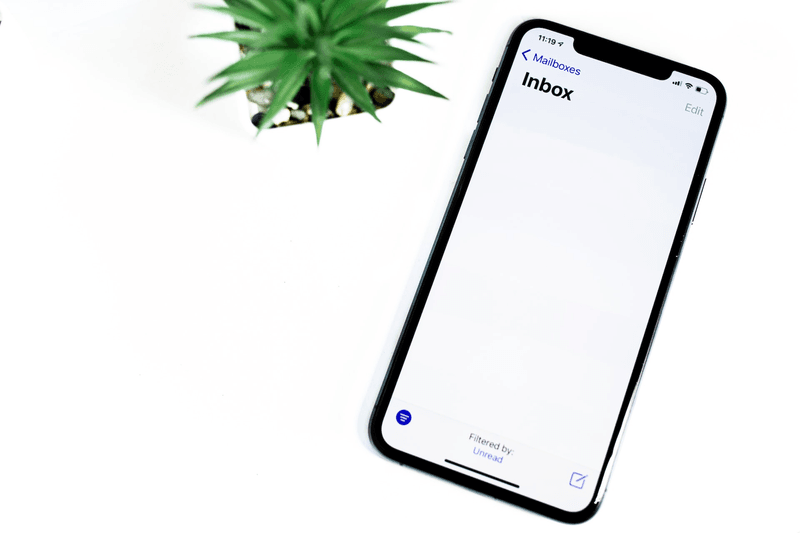
If a handful of your visitors abandon their carts without finalizing the purchase, they aren’t necessarily lost prospects. Some customers add items to their cart, then wait until payday to complete the sale. Others simply get distracted by other shopping opportunities or become uncertain at the last minute.
Using cart abandonment software is the best way to incite customers to follow through with their conversions. This software sends automated emails to visitors who left items in their cart without completing their purchase.
Sometimes, an email containing an attractive product image is all it takes to remind customers why they were interested in buying the product in the first place. Add a big “buy now” or “complete your purchase” button to the email template to make it as simple as possible to check out with just one click.
If you don’t get much success with simply reminding customers about their abandoned cart, consider offering a small, exclusive discount to customers that go through with their sale. This should appeal to customers who are trying to justify spending X amount of money on your product.
Here are other proven ways to reduce shopping cart abandonment this year.
Offer a good returns policy
Returns policies are viewed by more than 60% of customers before a purchase, and half of customers say that an easy returns policy is one of their deciding factors when buying from eCommerce stores. So, offering a good returns policy is an effective way to turn your visitors into customers and optimize your conversion rate.
Prove upfront that your returns policy is quick and easy by providing key information on your website’s homepage. Free returns are essential, here – customers won’t want to take the risk of a purchase if they know they’ll have to pay to send the product back if it doesn’t meet their expectations.
Offering a good returns policy might seem like a basic business practice, but if you’re lacking one, your conversion rate will suffer.
Provide clear, detailed product information
The more clearly and thoroughly you can highlight a product’s features, the more tempting it should be to your customers. Once you’ve lured your customers in with images and competitive pricing, you need to tell them how your product can change their life.
Your product descriptions should be detailed and informative, allowing your customer to understand exactly what they’re buying. List the product specs in a table or bullet point list, and make sure any information about maintenance or upkeep is clearly defined. Fine-tuning your product descriptions should also improve your visibility on search engines, giving you double the benefits.
If sales writing isn’t your strong point, consider hiring an experienced copywriter to write winning product titles and descriptions for you. The short-term investment should pay for itself in a matter of months if the persuasive copywriting does what you intended to do: improve eCommerce conversion rates.
Make sure your product descriptions complement your visual information nicely. Aim for at least three product images per product, with the option to zoom in on images for a high-definition close-up.
Remember, you want your product information to sound more appealing than your competitors’, but don’t lie to make more sales. That’ll only end in an influx of bad reviews and a busy month of processing returns.
Don’t forget about desktop
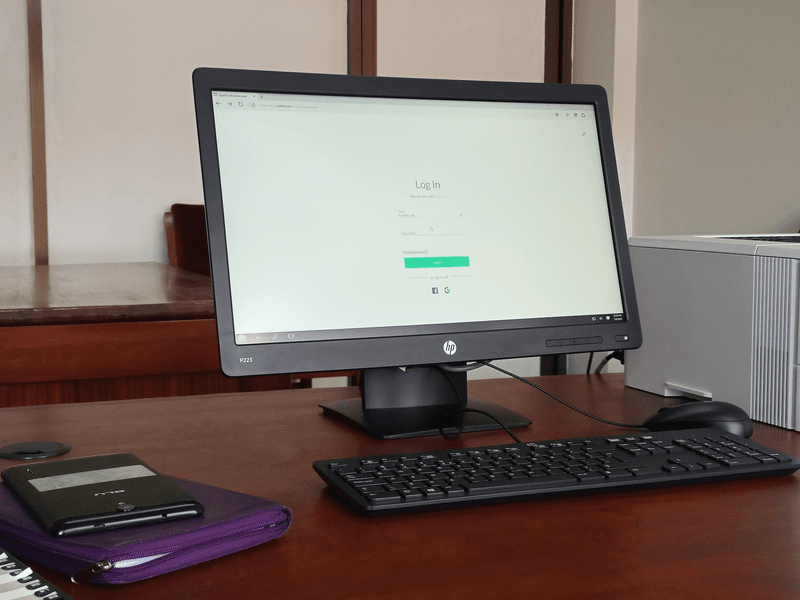
There’s so much focus nowadays on having a mobile-friendly eCommerce store. While this is undoubtedly important, don’t forget about your visitors who would rather browse on their desktops.
Desktop shopping has one notable benefit: laptops and computer screens are much larger than phone screens, allowing users to see more content with less effort. A report by Monetate eCommerce Quarterly found that average order value is 55% higher on desktop than on a mobile device – so make sure your desktop visitors are well catered to.
A fancy app and mobile-friendly website features are essential, but make sure your website itself doesn’t fall behind the times. Use the tips above to ensure your website is as user-friendly, visually appealing, easy to navigate, and geared towards hassle-free sales, on both mobile devices and desktops.
Conclusion
Boosting your eCommerce conversion rate is one of the best ways to increase your ROI without having to make additional investments in expensive marketing efforts. By using live chat to engage with customers, using high-quality images and videos to sell products, and implementing the other methods mentioned in this guide, you should effectively increase your conversion rate in a matter of months.
Keen to know more about live chat? Get started today and see how you can increase your eCommerce conversion rate with live chat.
